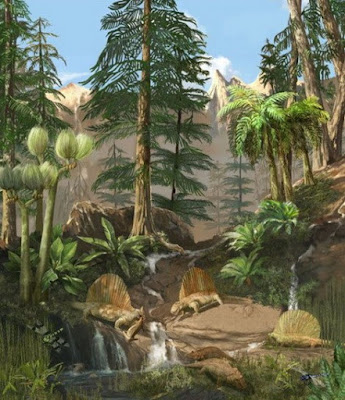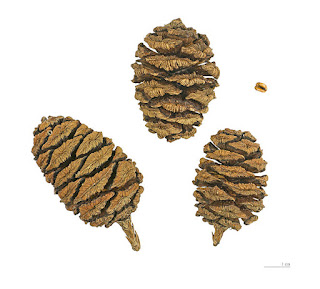The on going evolution of plants.
Over the past 10 weeks we have embarked on a journey from 1.2
billion years ago to the present. This final blog is a summary of my previous posts on the evolution of plants. The transition of aquatic plant life to
terra-firma during the mid-Paleozoic era enabled the commencement of
terrestrial life. Phylogenetic studies linked the ancestral origin of land
plants to a charophycean green algae (Crane & Kenrick 1997).
During the Upper Ordovician period 475 million years ago,
the terrestrialization of charophycean algae led to the evolution of the first
permanent land-dwelling plants, the bryophytes (Willis & McElwain 2014). We
learnt that bryophyte is used to describe plants with no vascular or
specialised transportation system such as liverworts, mosses and hornworts.
A change in prehistoric global climate during the Mesozoic
era, brought a transformation of the landscape. The arrival of gymnosperms. The
evolution of the ovule, the seed, and pollination allowed for the successful
radiation of gymnosperms, such as cycads and conifers throughout the Mesozoic
era and into our current period (Evert & Eichhorn 2013).
The end of the Mesozoic era 140 million years ago not only
led to the mass extinction of dinosaurs, gymnosperms which covered the earths
landscape also diminished. Perhaps the most important evolutionary event within
the kingdom Plantae at the time, was the evolution of seeded flowering plants,
angiosperms (Rost 1998).
We learnt angiosperms are all grouped within the phylum,
Anthophyta. Angiosperms, meaning “seed within a vessel”, make up 90% of all
plants we see today, between 300-450 000 species, making them by far the
largest phylum of photosynthetic organisms (Evert and Eichhorn 2013). We also learnt
that as plants have evolved, the once large and dominant gametophyte
generations, over time were reduced, and sporophyte generations now dominant
the lifecycles.
The amazing, ongoing evolution of plants, particularly
angiosperms, allows for continued domination, diversification and radiation of
plant life in all climatic conditions.
References
Crane, P.R. & Kenrick, P. 1997, "The origin and early evolution of plants on
land", Nature, vol. 389, no. 6646, pp. 33-39.
Evert, R.F., Raven, P.H. & Eichhorn, S.E. 2013, Biology of plants, Eighth edn, W.H. Freeman and Company Publishers, New York.
Rost, T.L. 1998, Plant
biology, Wadsworth, Belmont, Calif.
Willis, K.J. & McElwain, J.C. 2014, The evolution of plants, Second edn, Oxford University
Press, Oxford.
Pinterest, Date
unknown, Plant evolution timeline, image,
viewed May 2018, < https://www.pinterest.com.au/pin/366339750913786669/>.
Nicer web, 2018, Gametophyte
and sporophyte lifecycle, image, viewed May 2018, < http://bio1151b.nicerweb.net/Locked/media/ch30/>.





Thank you for an interesting and enjoyable blog.
ReplyDelete